-
REVIEW11-27-2023
Nursing diagnosis proposal “Impaired Peripheral Venous Return”: concept formation
Revista Brasileira de Enfermagem. 2023;76(5):e20220426
Abstract
REVIEWNursing diagnosis proposal “Impaired Peripheral Venous Return”: concept formation
Revista Brasileira de Enfermagem. 2023;76(5):e20220426
DOI 10.1590/0034-7167-2022-0426
Views0See moreABSTRACT
Objectives:
to develop a nursing diagnosis proposal focused on venous return.
Methods:
this is a concept analysis according to the model proposed by Walker and Avant, which is operationalized through an integrative review. The study was carried out according to the Preferred Reporting Items for Systematic Reviews and Meta-Analyses protocol recommendations.
Results:
the analysis of the 131 studies allowed identifying attributes, antecedents and consequences. The most common attribute was decreased venous flow. The antecedents most frequently found were structural and/or functional valve deficiency, advanced age and peripheral venous thrombosis. The most common consequences were peripheral edema, venous ulcer and pain in the extremity.
Conclusions:
the formulated nursing diagnosis was proposed as part of Domain 4, Activity/rest, in Class 4, Cardiovascular/pulmonary responses, with eight defining characteristics, five related factors, six at-risk populations and four associated conditions.

-
REVIEW11-27-2023
Abdominal compressions during cardiopulmonary resuscitation: a scoping review
Revista Brasileira de Enfermagem. 2023;76(5):e20220400
Abstract
REVIEWAbdominal compressions during cardiopulmonary resuscitation: a scoping review
Revista Brasileira de Enfermagem. 2023;76(5):e20220400
DOI 10.1590/0034-7167-2022-0400
Views0ABSTRACT
Objectives:
to map the scientific evidence on the use of abdominal compressions during cardiopulmonary resuscitation in patients with cardiac arrest.
Methods:
this is a scoping review based on the question: “What is the evidence regarding the use of abdominal compressions during cardiopulmonary resuscitation in patients with cardiac arrest?”. Publications up to August 2022 were collected from eight databases. The Preferred Reporting Items for Systematic Reviews and Meta-Analyses extension for Scoping Reviews was used.
Results:
seventeen publications were included. The identified general population consisted of adults and elderly individuals. The primary outcome revealed significant rates of return of spontaneous circulation. Secondary outcomes indicated a significant improvement in heart rate, blood pressure, oxygen saturation, and other outcomes.
Conclusions:
abdominal compressions have been shown to be beneficial. However, further clinical studies are needed to identify the best execution method and its impacts.
Keywords:Abdominal CavityCardiopulmonary ResuscitationHeart ArrestHeart MassageReturn of Spontaneous CirculationSee more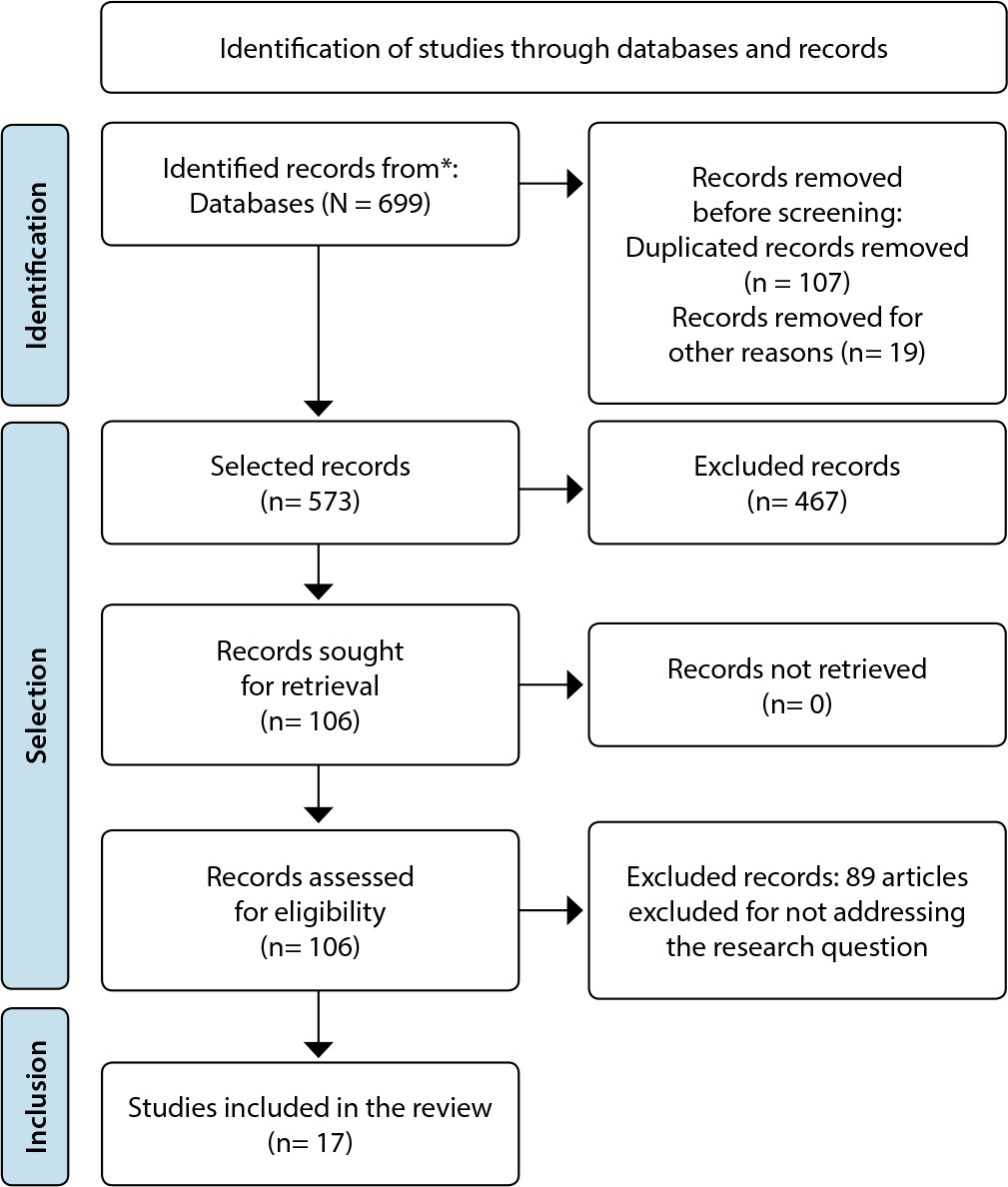
-
ORIGINAL ARTICLE11-27-2023
Outcomes of Intrauterine Device Insertion by Certified Midwives and Obstetric Nurse Practitioners
Revista Brasileira de Enfermagem. 2023;76(5):e20220286
Abstract
ORIGINAL ARTICLEOutcomes of Intrauterine Device Insertion by Certified Midwives and Obstetric Nurse Practitioners
Revista Brasileira de Enfermagem. 2023;76(5):e20220286
DOI 10.1590/0034-7167-2022-0286
Views0See moreABSTRACT
Objectives:
to evaluate the outcomes of Interval Copper Intrauterine Device (IUD) insertion performed by certified midwives and obstetric nurse practitioners at a Peri-Hospital Birth Center.
Methods:
a cross-sectional study was conducted involving 75 women who underwent IUD insertion between January 2018 and February 2020. Data collection was carried out using medical records and telephone interviews.
Results:
no instances of uterine perforation were observed. Expulsion rates of the devices were 1.3% within 30 to 45 days of use and 5.3% within the first year of use. The follow-up removal rate was 4.0%. The average pain score reported was 4.2 (SD = 3.3). Among those who continued using the device, 93.1% expressed satisfaction.
Conclusions:
the findings demonstrate that IUD insertion by certified midwives and obstetric nurse practitioners is a safe procedure, yielding outcomes comparable to those reported in the existing literature.
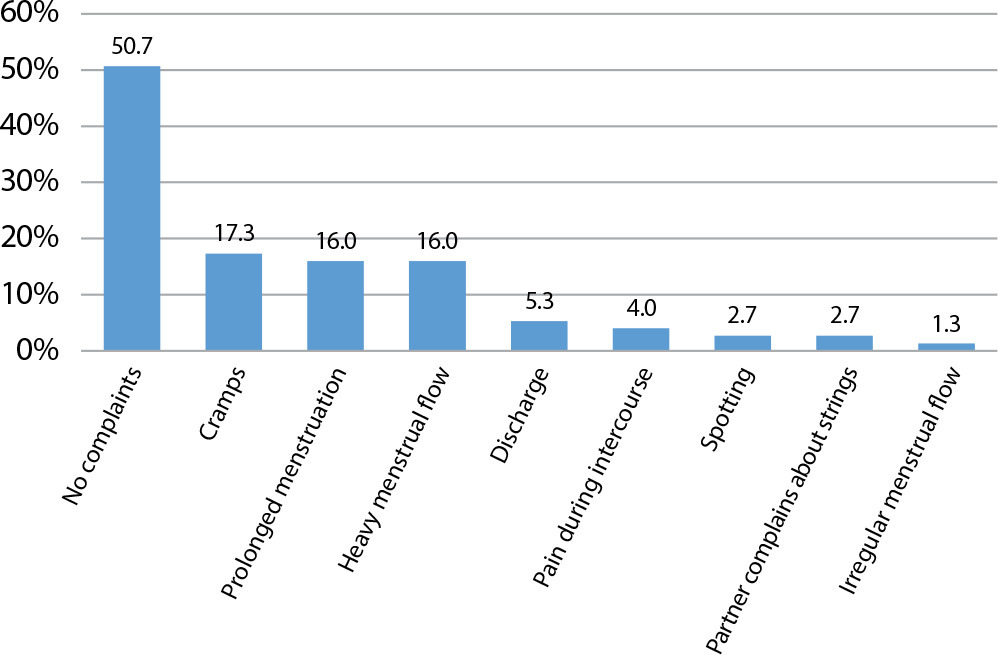
-
ORIGINAL ARTICLE11-27-2023
Prevalence of risk factors for primary postpartum hemorrhage in a university hospital
Revista Brasileira de Enfermagem. 2023;76(5):e20220134
Abstract
ORIGINAL ARTICLEPrevalence of risk factors for primary postpartum hemorrhage in a university hospital
Revista Brasileira de Enfermagem. 2023;76(5):e20220134
DOI 10.1590/0034-7167-2022-0134
Views0See moreABSTRACT
Objectives:
to identify the risk factors associated with primary postpartum hemorrhage in a university hospital.
Methods:
a cross-sectional study was conducted with 277 postpartum women who received care during childbirth or cesarean section between June and August 2020. Data were collected using a pre-structured questionnaire administered 24 hours after delivery. Poisson Regression was employed to analyze the factors associated with postpartum hemorrhage.
Results:
postpartum hemorrhage was observed in 30% of the study sample. Shock Index and uterine distension were found to be statistically associated with postpartum hemorrhage. Postpartum women with a Shock Index ≥ 0.9 had a 61% higher prevalence of postpartum hemorrhage (PR=1.61, 95% CI: 1.07 – 2.43), while those with uterine distension had a 134% higher prevalence (PR=2.34, 95% CI: 1.63 – 3.36).
Conclusions:
recognizing these factors contributes to improvements in clinical practice, as they enable the prediction of their occurrence and call for appropriate management, thereby preventing unfavorable outcomes.
-
ORIGINAL ARTICLE11-21-2023
Coping strategies for chronically ill children and adolescents facing the COVID-19 pandemic
Revista Brasileira de Enfermagem. 2023;76:e20230045
Abstract
ORIGINAL ARTICLECoping strategies for chronically ill children and adolescents facing the COVID-19 pandemic
Revista Brasileira de Enfermagem. 2023;76:e20230045
DOI 10.1590/0034-7167-2023-0045
Views0See moreABSTRACT
Objective:
to understand the experiences and coping strategies of children and adolescents with chronic illnesses during the COVID-19 pandemic.
Methods:
a descriptive study, with a qualitative approach, carried out with six children and adolescents at the reception of an outpatient clinic of a pediatric hospital in the state of Ceará. Data collection took place from April to September 2021, using story-drawing, analyzed in light of Coutinho’s criteria.
Results:
two thematic categories emerged: Situations experienced by children and adolescents in times of COVID-19; Coping strategies for children and adolescents in their chronic illness process during the COVID-19 pandemic.
Final considerations:
understanding the experiences and coping strategies of children and adolescents with chronic illness demonstrated the expression of creative imagination, incorporated by subjective components, which brings to light an approximation with the reality perceived and interpreted in a context of the COVID-19 pandemic.
-
ORIGINAL ARTICLE11-13-2023
Elaboration and validity of the Instrumento para Avaliação de Modelos metodológicos voltados ao Desenvolvimento de Tecnologias
Revista Brasileira de Enfermagem. 2023;76:e20230046
Abstract
ORIGINAL ARTICLEElaboration and validity of the Instrumento para Avaliação de Modelos metodológicos voltados ao Desenvolvimento de Tecnologias
Revista Brasileira de Enfermagem. 2023;76:e20230046
DOI 10.1590/0034-7167-2023-0046
Views0ABSTRACT
Objective:
to elaborate and validate the Instrumento para Avaliação de Modelos metodológicos voltados ao Desenvolvimento de Tecnologias.
Methods:
a methodological study, developed in three stages: instrument structuring through documentary research and researchers’ expertise; instrument validity with a panel of 11 expert judge nurses; and instrument final composition.
Results:
the instrument, after validity by experts, consisted of 30 items, divided into the content (26 items) and appearance (four items) domains. In the initial instrument validity process, 11 items were modified and seven were withdrawn, as they had a percentage of agreement below 0.80. The instrument showed excellent internal consistency, with values greater than 0.90 in its psychometric criteria.
Conclusion:
the instrument produced and validated aimed at assessing research methodological models for technological development showed good reliability, and may contribute to the methodological rigor of technological development research in nursing.
Keywords:NursingNursing Methodology ResearchPsychometricsSurveys and QuestionnairesTechnological DevelopmentSee more -
ORIGINAL ARTICLE11-13-2023
Educational technology on tuberculosis: construction shared with Primary Health Care nurses
Revista Brasileira de Enfermagem. 2023;76:e20230025
Abstract
ORIGINAL ARTICLEEducational technology on tuberculosis: construction shared with Primary Health Care nurses
Revista Brasileira de Enfermagem. 2023;76:e20230025
DOI 10.1590/0034-7167-2023-0025
Views0ABSTRACT
Objective:
to develop, in a participatory way, an educational technology to assist nurses in the management of tuberculosis cases in Primary Health Care.
Methods:
methodological research with a qualitative approach. Data were collected between June and October 2022, in 25 Basic Health Units, with 41 nurses interviewed individually. Thematic content analysis was carried out to guide technology elaboration.
Results:
three empirical categories were organized, demonstrating the facilities and difficulties in tuberculosis management, the conceptions about educational technology as a facilitator of the teaching-learning process in Primary Health Care and participatory development of technology. Nurses were in favor of constructing an instructional guide technology, and made suggestions to encourage its creation and use in daily service routine.
Final considerations:
the participatory process made it possible to create technology to assist nurses in the teaching-learning process in Primary Health Care about caring for people with tuberculosis.
Keywords:Educational TechnologyFamily Nurse PractitionersHealth EducationPrimary Health CareTuberculosisSee more -
REVIEW11-13-2023
Ocular dryness in intensive care: proposal for a new nursing diagnosis
Revista Brasileira de Enfermagem. 2023;76:e20220698
Abstract
REVIEWOcular dryness in intensive care: proposal for a new nursing diagnosis
Revista Brasileira de Enfermagem. 2023;76:e20220698
DOI 10.1590/0034-7167-2022-0698
Views0See moreABSTRACT
Objective:
to analyze the concept associated with diagnostic proposition Ocular dryness in adult patients hospitalized in an Intensive Care Unit, identifying its attributes, antecedents and consequences.
Methods:
a methodological study carried out through concept analysis, operationalized by scoping review.
Results:
the analysis of 180 studies allowed the identification of two attributes, 32 antecedents and 12 consequences. The attributes were tear film deficiency and ocular signs and/or symptoms. The prevalent antecedents were incomplete eyelid closure (lagophthalmos) and blinking mechanism decrease. Major consequences included conjunctival hyperemia and decreased tear volume.
Conclusions:
this study allowed constructing nursing diagnosis Ocular dryness, part of domain 11, class 2, with 12 defining characteristics, 12 related factors, seven populations at risk and 13 associated conditions. This problem-focused proposal may provide targeted care by promoting early detection and implementing interventions that reduce the risk of ocular damage.
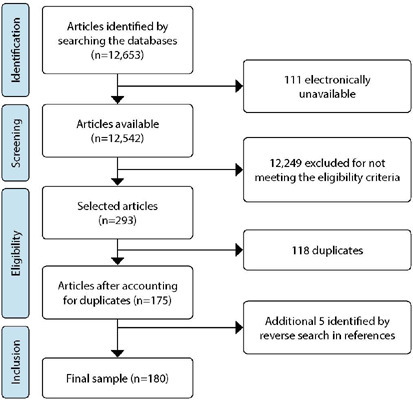
-
EDITORIAL03-08-2024
A enfermagem como protagonista no enfrentamento da hesitação e recusa vacinal
Revista Brasileira de Enfermagem. 2024;77:e77suppl101
Abstract
EDITORIALA enfermagem como protagonista no enfrentamento da hesitação e recusa vacinal
Revista Brasileira de Enfermagem. 2024;77:e77suppl101
DOI 10.1590/0034-7167.202477suppl101pt
Views0Desde a década de 1970, o Ministério da Saúde do Brasil instituiu o Programa Nacional de Imunização (PNI), que precedeu o Sistema Único de Saúde e que lhe foi incorporado e fortalecido, devido ao modelo descentralizado aos municípios, mas de comando único ao nível central. Seu objetivo era e ainda é coordenar as ações de […]See more -
EDITORIAL03-08-2024
Nursing as a player in tackling vaccine hesitancy and refusal
Revista Brasileira de Enfermagem. 2024;77:e77suppl101
Abstract
EDITORIALNursing as a player in tackling vaccine hesitancy and refusal
Revista Brasileira de Enfermagem. 2024;77:e77suppl101
DOI 10.1590/0034-7167.202477suppl101
Views1Since the 1970s, the Brazilian Ministry of Health established the Brazilian National Immunization Program (PNI – Programa Nacional de Imunização), which preceded the Brazilian Health System and which was incorporated and strengthened due to the decentralized model to municipalities, but under single command at central level. Its objective was and still is to coordinate vaccination […]See more -
EDITORIAL02-26-2024
Enfermeiro Navegador de Pacientes com Câncer: contribuições para a discussão no cenário nacional
Revista Brasileira de Enfermagem. 2024;77(2):e770201
Abstract
EDITORIALEnfermeiro Navegador de Pacientes com Câncer: contribuições para a discussão no cenário nacional
Revista Brasileira de Enfermagem. 2024;77(2):e770201
DOI 10.1590/0034-7167.2024770201pt
Views0A prática profissional da navegação de pacientes é algo incipiente no Brasil e, sendo assim, é indispensável uma ampla discussão com vários setores da sociedade, sendo essa a principal propositura deste editorial. Comecemos pela história.A navegação de pacientes foi definida em 1989 como uma intervenção de prestação de serviços baseada na comunidade, com o objetivo […]See more -
EDITORIAL02-26-2024
Nurse Navigator of Cancer Patients: contributions to the discussion on the national stage
Revista Brasileira de Enfermagem. 2024;77(2):e770201
Abstract
EDITORIALNurse Navigator of Cancer Patients: contributions to the discussion on the national stage
Revista Brasileira de Enfermagem. 2024;77(2):e770201
DOI 10.1590/0034-7167.2024770201
Views0The professional practice of patient navigation is incipient in Brazil and, therefore, a broad discussion with various sectors of society is essential, which is the main purpose of this editorial. Shall we start with the story.Patient navigation was defined in 1989 as a community-based service delivery intervention aimed at appropriately promoting access to diagnosis and […]See more -
ERRATUM02-26-2024
ERRATUM
Revista Brasileira de Enfermagem. 2024;77(1):e2024n1e02
Abstract
ERRATUMERRATUM
Revista Brasileira de Enfermagem. 2024;77(1):e2024n1e02
DOI 10.1590/0034-7167.20247701e02
Views0In the article “Active teaching model to promote critical thinking”, with DOI number: , published in Revista Brasileira de Enfermagem, 2019;72(1):293-8, on page 297:Include before REFERENCES:[…]See more -
REVIEW02-26-2024
Practice of immersion in hot water to relieve pain in neonatology: an integrative review
Revista Brasileira de Enfermagem. 2024;77(1):e20230260
Abstract
REVIEWPractice of immersion in hot water to relieve pain in neonatology: an integrative review
Revista Brasileira de Enfermagem. 2024;77(1):e20230260
DOI 10.1590/0034-7167-2023-0260
Views0See moreABSTRACT
Objectives:
to identify immersion use in hot water to relieve pain in newborns.
Methods:
an integrative literature review, carried out in the PubMed, VHL, EMBASE, Scopus, CINAHL, Cochrane and SciELO databases, with investigations in English, Spanish, French or Portuguese, published between 2002 and 2022. The Health Sciences Descriptors (DeCS) and Medical Subject Headings (MeSH) were used to answer the following question: what are the uses of hot water immersion in relieving pain in newborns?
Results:
nine studies were included, mainly Brazilian, experimental, with a predominance of strong and moderate levels of evidence. Hydrotherapy and bath use (immersion and bandaging) was observed, promising interventions in reducing pain scores, assessed using scales, physiological and endocrine parameters.
Conclusions:
hot water proved to be a promising non-pharmacological intervention in relieving pain in infants in different contexts.
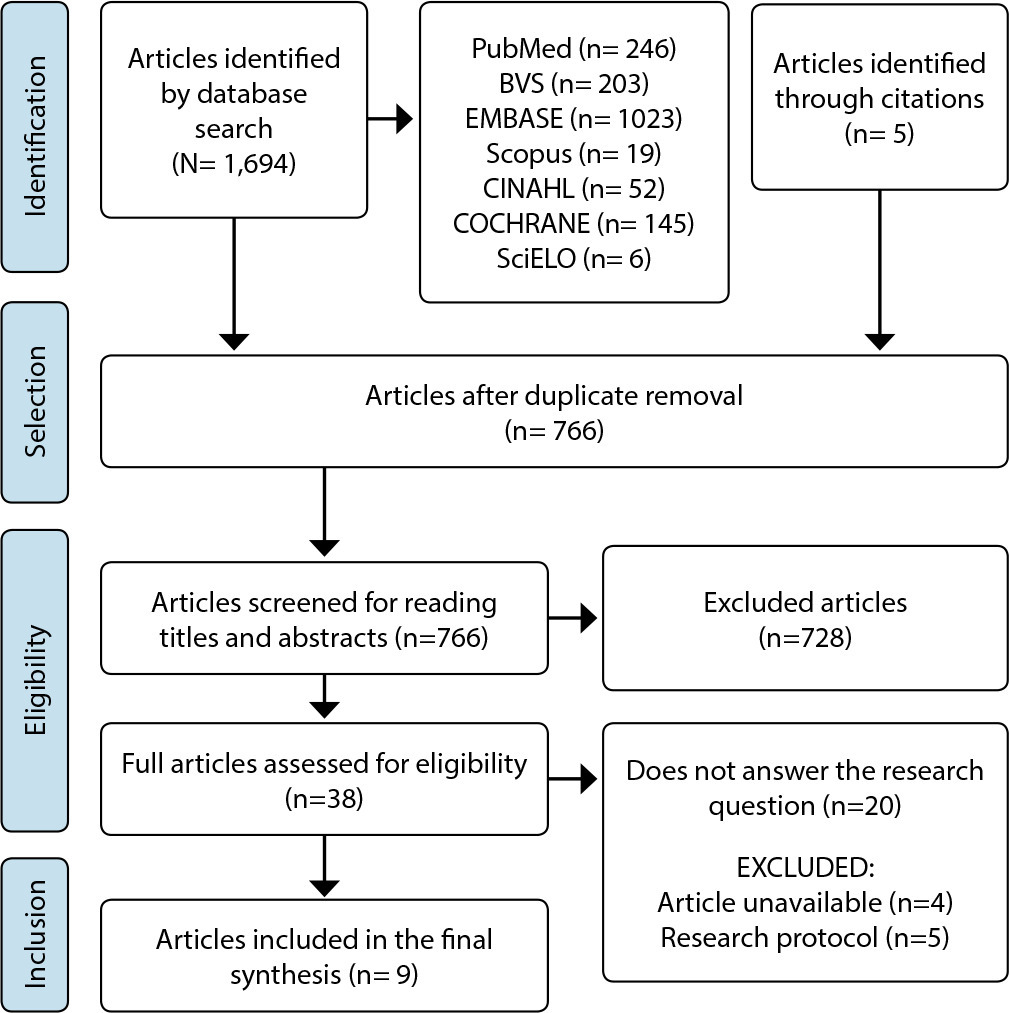
-
ORIGINAL ARTICLE02-26-2024
Artificial intelligence to predict bed bath time in Intensive Care Units
Revista Brasileira de Enfermagem. 2024;77(1):e20230201
Abstract
ORIGINAL ARTICLEArtificial intelligence to predict bed bath time in Intensive Care Units
Revista Brasileira de Enfermagem. 2024;77(1):e20230201
DOI 10.1590/0034-7167-2023-0201
Views0See moreABSTRACT
Objectives:
to assess the predictive performance of different artificial intelligence algorithms to estimate bed bath execution time in critically ill patients.
Methods:
a methodological study, which used artificial intelligence algorithms to predict bed bath time in critically ill patients. The results of multiple regression models, multilayer perceptron neural networks and radial basis function, decision tree and random forest were analyzed.
Results:
among the models assessed, the neural network model with a radial basis function, containing 13 neurons in the hidden layer, presented the best predictive performance to estimate the bed bath execution time. In data validation, the squared correlation between the predicted values and the original values was 62.3%.
Conclusions:
the neural network model with radial basis function showed better predictive performance to estimate bed bath execution time in critically ill patients.
-
REVIEW02-26-2024
Evidence of intrauterine device insertion by nurses in Primary Health Care: an integrative review
Revista Brasileira de Enfermagem. 2024;77(1):e20230134
Abstract
REVIEWEvidence of intrauterine device insertion by nurses in Primary Health Care: an integrative review
Revista Brasileira de Enfermagem. 2024;77(1):e20230134
DOI 10.1590/0034-7167-2023-0134
Views0ABSTRACT
Objectives:
to synthesize and analyze evidence on intrauterine device insertion by nurses in Primary Health Care.
Methods:
an integrative review, carried out in the BDENF, CINAHL, LILACS, SciELO, Scopus, PubMed and Web of Science databases in June 2022, delimiting the period from 1960 to 2022.
Results:
141 articles were identified in the initial search, and 10 studies made up the final sample. Four (40%) were developed in the United States and one (10%) in Brazil, with publications from 1979 to 2021. The findings were grouped into three categories: Nurse training to insert an intrauterine device; Nurses’ competency to insert an intrauterine device; and Women’s access to intrauterine devices.
Conclusions:
nurse theoretical and practical training is a prominent element, consolidated in the favorable outcomes of insertions performed by nurses and satisfaction among women, a practice that has expanded access to the contraceptive method in Primary Health Care.
Keywords:Advanced Practice NursingIntrauterine DevicesLong-Acting Reversible ContraceptionNursesPrimary Health CareSee more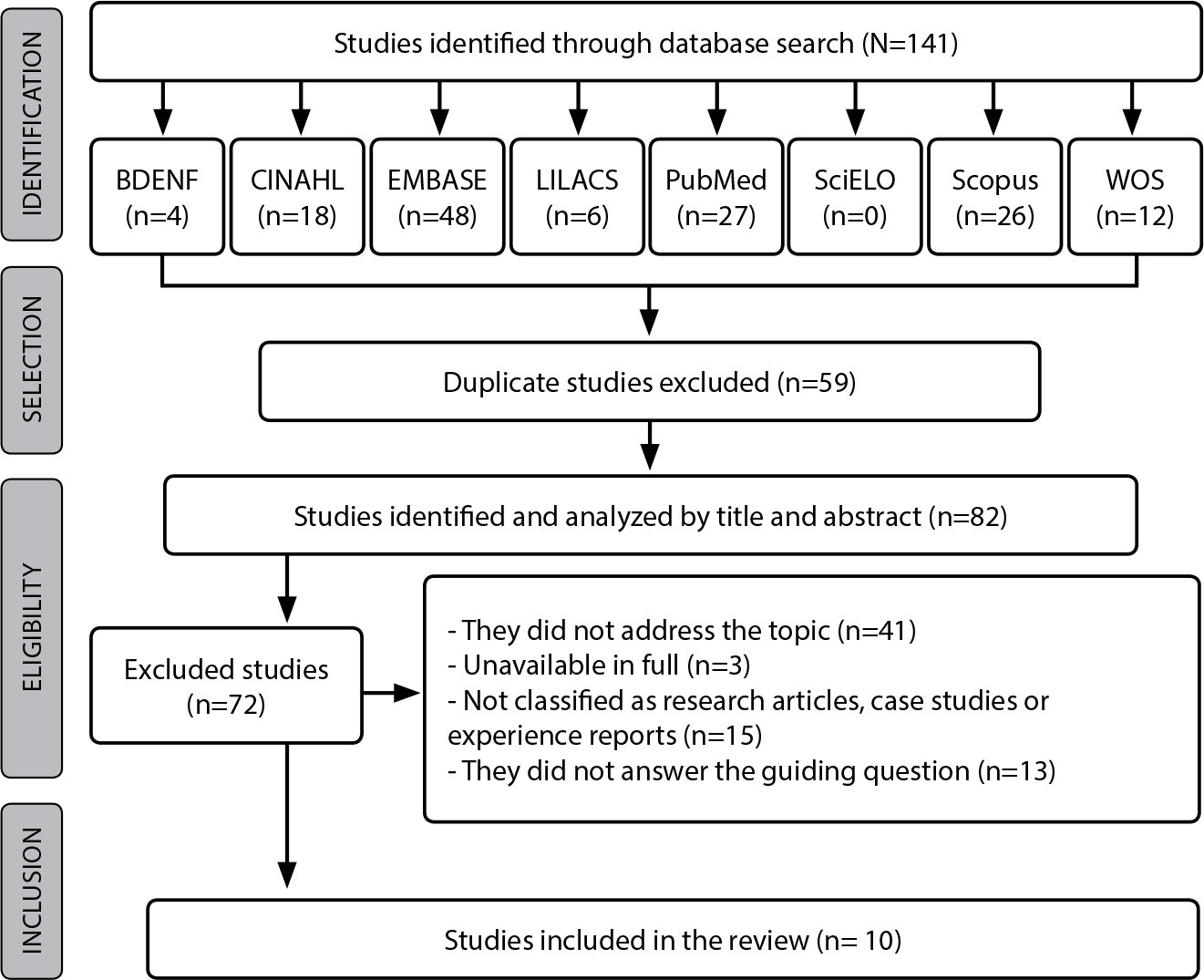
-
RESEARCH01-01-2015
Women’s temporality after cardiac surgery: contributions to nursing care
Revista Brasileira de Enfermagem. 2015;68(6):1056-1062
Abstract
RESEARCHWomen’s temporality after cardiac surgery: contributions to nursing care
Revista Brasileira de Enfermagem. 2015;68(6):1056-1062
DOI 10.1590/0034-7167.2015680609i
Views0See moreABSTRACT
Objective:
to unveil women’s existential movement after cardiac surgery.
Method:
qualitative phenomenological study. The research setting was a hospital in Minas Gerais, in which ten women were interviewed between December 2011 and January 2012.
Results:
after hospital discharge, the women experienced physical, social and emotional impairments, and expressed the desire to go back to the time before their diagnosis, because they felt as though they still had heart disease. This vague and average understanding led to three units of meaning that, from a Heideggerian hermeneutic point of view, revealed the phenomenon of cardiac surgery as a present circumstance that limited the participants’ daily lives.
Conclusion:
nurses supporting women patients after cardiac surgery should promote health considering existential facets that are expressed during care. The bases for comprehensive care are revealed in singular and whole meetings of subjectivity.
-
RESEARCH01-01-2015
Compliance of hand hygiene in maintaining the catheter for hemodialysis
Revista Brasileira de Enfermagem. 2015;68(6):1050-1055
Abstract
RESEARCHCompliance of hand hygiene in maintaining the catheter for hemodialysis
Revista Brasileira de Enfermagem. 2015;68(6):1050-1055
DOI 10.1590/0034-7167.2015680608i
Views0See moreABSTRACT
Objective:
to assess the compliance of the practice of hand hygiene in maintaining the temporary double-lumen catheter for hemodialysis, through the use of process indicator at the University Hospital of the University of São Paulo.
Method:
a quantitative, exploratory, descriptive, observational study. Sample consists of 155 observations of patients with catheter from March to November 2011, using the Maintenance Indicator Temporary Dual Lumen Catheter for Hemodialysis.
Results:
the overall compliance rate was 65.8%. Of the 13 specific components evaluated, 9 (69.2%) had 100% compliance. Hand hygiene by health professionals presented one of the worst rates (83.9%).
Conclusion:
it is necessary to implement strategies to reduce the rates of non-compliance, improve quality of care and safety of patients with catheter, and explore factors that affect the process, such as structural issues, and behavioral materials.
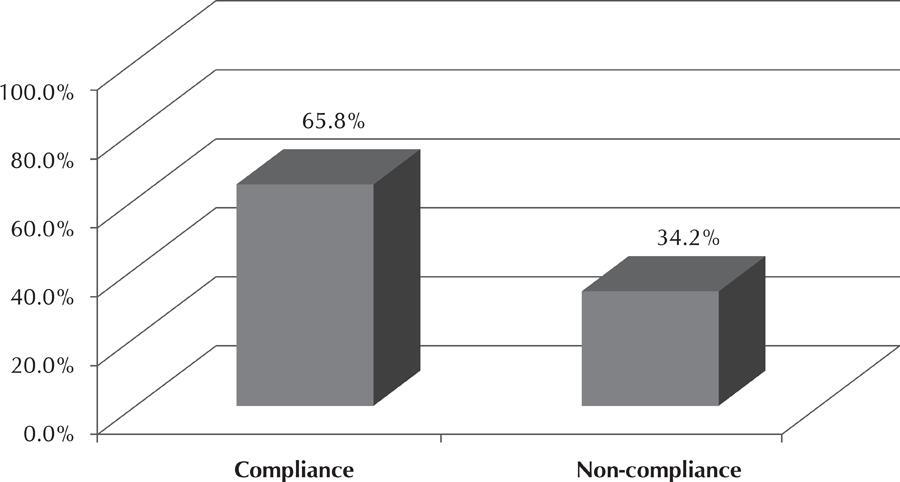
-
RESEARCH01-01-2015
Replication of the training program in nonverbal communication in gerontology
Revista Brasileira de Enfermagem. 2015;68(6):1042-1049
Abstract
RESEARCHReplication of the training program in nonverbal communication in gerontology
Revista Brasileira de Enfermagem. 2015;68(6):1042-1049
DOI 10.1590/0034-7167.2015680607i
Views0See moreABSTRACT
Objective:
to measure the rate of assimilation of applied content at immediate and subsequent moments after a nonverbal communication in gerontology training program.
Method:
descriptive and exploratory fi eld study developed in three state administered hospitals, which attend Brazilian National Health Service (SUS) clients. The duration of the training was twelve hours, applied with 102 healthcare professionals.
Results:
the results revealed that the rate of assimilation of the content immediately after the program was satisfactory, as well as being satisfactory in the aspects concept of aging; strategies to foster the independence and autonomy of the elderly person; communication interferences linked to the elderly and the professional; recognition of non-verbal functions and dimensions. The exception was the professional perception faced with aspects that influence the success of communication.
Conclusion:
it was concluded that the replication of this program was relevant and current for the hospital context, remaining effi cient for healthcare professionals.
-
RESEARCH01-01-2015
Physical and psychological violence against the elderly: prevalence and associated factors
Revista Brasileira de Enfermagem. 2015;68(6):1035-1041
Abstract
RESEARCHPhysical and psychological violence against the elderly: prevalence and associated factors
Revista Brasileira de Enfermagem. 2015;68(6):1035-1041
DOI 10.1590/0034-7167.2015680606i
Views0See moreABSTRACT
Objective:
to verify the prevalence and associated factors to physical and psychological violence against elderlies and trace the sociodemographic and clinical indicators of this population.
Method:
household survey conducted in 729 elderlies Uberaba – MG. Data were analyzed by Chi-square test and logistic regression (p < 0,05).
Results:
the prevalence of elderly on violence was 20.9%, and 5.9% to 20.9% for physical and psychological. Among them prevailed women; with 60├80 years; no education; with income, with their partner as the primary aggressor; negative self-perception of health, hospitalization in the last year and presence of multimorbidities. The violence has been associated with have 60├80 years, living with your partner and dependence for instrumental activities of daily living.
Conclusion:
reinforces the need for early identification of domestic violence and invest in both the old protective actions and in maintaining functional capacity and social inclusion.
-
RESEARCH01-01-2015
First civil service examination for nurses at the Administrative Department of Public Service
Revista Brasileira de Enfermagem. 2015;68(6):1027-1034
Abstract
RESEARCHFirst civil service examination for nurses at the Administrative Department of Public Service
Revista Brasileira de Enfermagem. 2015;68(6):1027-1034
DOI 10.1590/0034-7167.2015680605i
Views0See moreABSTRACT
Objective:
to describe the results of the first national public service examination for nurses conducted by the Administrative Department of Public Service between 1941 and 1942.
Method:
historical-documentary research with a quantitative approach.
Results:
155 candidates registered, aged between 21 and 35 years old, 141 (91%) of whom were female. A total of 120 candidates passed the practical exam. Of these, 116 took the written qualification exam. In the end, 107 were approved, 74 (69.1%) of whom were temporary public nurses, 59 (55.1%) Anna Nery Nursing School alumni, and 10 among the first 20 twenty became involved with the Brazilian Association of Nursing later.
Conclusion:
although the exam legitimized the meritbased culture in the staff selection in the area of Brazilian nursing, egalitarian criteria were mitigated, especially regarding the grades applied to different kinds of exams. This resulted in a significant number of temporary nurses approved.
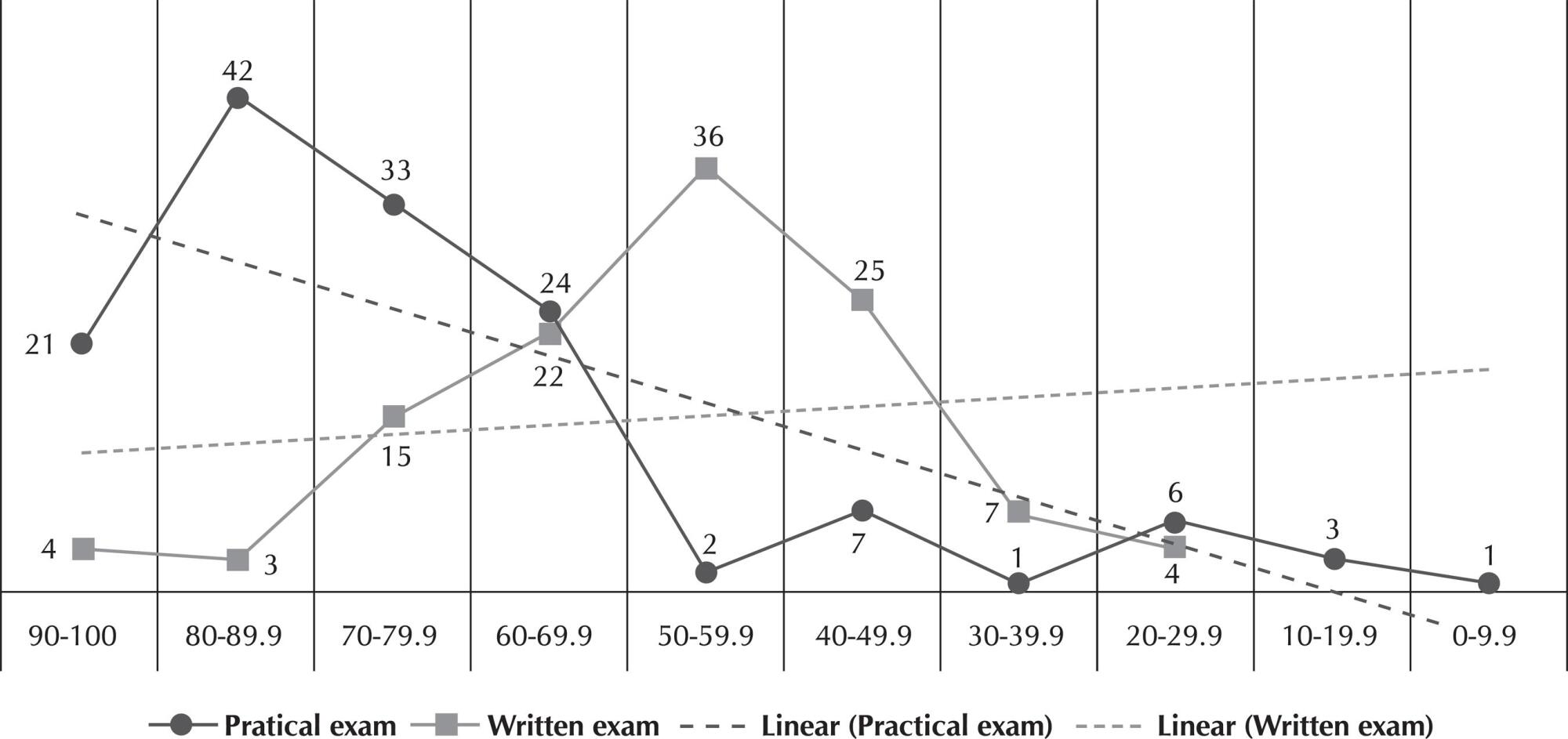
-
RESEARCH01-01-2015
Children and adolescents with chronic kidney disease in haemodialysis: perception of professionals
Revista Brasileira de Enfermagem. 2015;68(6):1020-1026
Abstract
RESEARCHChildren and adolescents with chronic kidney disease in haemodialysis: perception of professionals
Revista Brasileira de Enfermagem. 2015;68(6):1020-1026
DOI 10.1590/0034-7167.2015680604i
Views0See moreABSTRACT
Objective:
to identify aspects impacting on quality of life for children and adolescents with chronic kidney disease on hemodialysis, from the perspective of health professionals, as an essential step for the construction of a specific module of the DISABKIDS® instrument.
Method:
methodological study. Data was collected between May and June 2012, through personal interviews with 12 participants, in two dialysis centers. The empirical material was analyzed according to the thematic content analysis, using the program MAXQDA – Qualitative Data Analysis Software.
Results:
we identifi ed seven themes: self-care, family support, impact of diagnosis, expectation of kidney transplant, truancy, socialization and stigma, grouped into three domains.
Conclusion:
the results showed aspects that impact the quality of life of these customers and, therefore, will be considered in the development of specifi c DISABKIDS® module. In addition, these aspects are relevant to the preparation and planning of actions directed towards children and adolescents with chronic kidney disease.
-
RESEARCH01-01-2015
From frustration to coping with caring for death by nurse technicians
Revista Brasileira de Enfermagem. 2015;68(6):1013-1019
Abstract
RESEARCHFrom frustration to coping with caring for death by nurse technicians
Revista Brasileira de Enfermagem. 2015;68(6):1013-1019
DOI 10.1590/0034-7167.2015680603i
Views0See moreABSTRACT
Objective:
to understand nurse technicians’ experience with caring for the death of terminal patients in ICUs and to configure a theoretical model.
Method:
qualitative study with theoretical saturation when analyzing the 10th non-directive interview, having as reference Grounded Theory, Symbolic Interactionism and Bioethics.
Results:
the core category – from frustration to coping with dignified nursing care for finitude: the acceptance of death as a therapeutic and intervenient component – emerged from the comparison of the sub-processes: when the nurse does not feel prepared for caring for death, accepting death as a therapeutic phenomenon and developing coping strategies.
Conclusion:
according to Symbolic Interactionism, a novice professional’s frustration in caring for an individual for death is related to his/her interaction and interpretation of the situation as he/she feels prepared only to care for individuals for life.
-
RESEARCH01-01-2015
Sedentary lifestyle in individuals with hypertension
Revista Brasileira de Enfermagem. 2015;68(6):1005-1012
Abstract
RESEARCHSedentary lifestyle in individuals with hypertension
Revista Brasileira de Enfermagem. 2015;68(6):1005-1012
DOI 10.1590/0034-7167.2015680602i
Views0See moreABSTRACT
Objective:
to identify the prevalence of nursing diagnosis Sedentary lifestyle (SL) and to analyze its association with clinical indicators (CI) and related factors (RF) in patients with hypertension.
Method:
cross-sectional study with 285 patients with hypertension at a reference center for outpatient care in Northeastern Brazil. To collect data it was used an instrument based on operational defi nitions of the CI and RF previously validated. Four nurses rated SL as present or absent. To evaluate the association between CI and RF with the presence of SL it was applied the chi-square test. The prevalence ratio and confi dence interval was calculated to verify the magnitude of the effect between RF and SL. Results: SL was identifi ed in 55.8% of the sample. Five IC and six RF showed a signifi cant association with SL.
Conclusion:
the study identifi es main indicators for inference of SL as well as their possible causal factors among people with hypertension.
Search
Search in:
Nuvem de Tags
Aged (144) Atenção Primária à Saúde (239) COVID-19 (104) Cuidados de Enfermagem (269) Educação em Enfermagem (151) Educação em Saúde (139) Enfermagem (930) Estudos de Validação (131) Health Education (144) Idoso (208) Mental Health (149) Nursing (987) Nursing Care (306) Patient Safety (151) Primary Health Care (284) Qualidade de Vida (104) Quality of Life (106) Saúde Mental (145) Segurança do Paciente (150) Validation Studies (108)



